Village Court
I first stumbled across the Village Court--also known as the Formosa Cottages and Chaplin Court--in the late 80s, and began my obsession with Arthur and Nina Zwebell.
In the late 80s, I was living in an apartment on Formosa Ave between Sunset and Hollywood, an apartment with the notable amenity of having a wall of locked phone jacks at the pool, so young starlets could sunbathe without missing a call from their agent.
I was already a huge Chaplin fan. I’d spent quite a bit of my youth at the Fox Venice revival theater, which was walking distance from my childhood home, where I first experienced Chaplin’s films on the big screen. His films had recently been released for the first time on VHS, and I had lucked upon a rare first printing of Chaplin’s long out of print autobiography at Pickwick Books. Having his former studios (A&M at the time, Henson studios now) right up the street from me was an added thrill.
So when I read about the Formosa Cottages in Hollywood: The Movie Lover’s Guide, I had to rush right over and check them out. At the time, they were rumored to have been built by Chaplin as part of his studio, for dressing rooms or guest houses or even as set pieces. How was it possible that this was three blocks away from me and I had never seen it?
I drove over and found myself awed by the unexpectedness of it. It exemplified Hollywood, stumbling across pure magic in the midst of the mundane. I was drawn to it, visiting it frequently, becoming a place I took visitors to L.A. I took photos with my SLR, although it was hard to get a good shot. At the time, the property was overgrown, shrouded behind a mass of trees. It added to the mystery, but made it impossible to take it all in as a whole. When I took these photographs, the property was not gated. According to city planning notes, the fence was added in the late 80s, so likely not long after I photographed it. In 1991 there was a general rehab, where windows were replaced and it was repainted in shades of brown, and reroofed. I am so glad I captured it before all of the renovations, as I much prefer the original look.
I went down the rabbit hole, and learned that it was the second of eight lavish courtyard apartments built in the Hollywood area in the 1920s by Arthur & Nina Zwebell, best known for the El Cabrillo, the Andalusia, and Patio del Moro. 1992’s Courtyard Housing in Los Angeles dedicates a chapter to the Zwebell’s exemplary work, and yet it only mentions Village Court in passing. Stay tuned, you will be hearing a lot more about the Zwebell’s and their fantastical creations in upcoming posts.
Village Court is the second courtyard apartment the Zwebell’s built, and the oldest one that still exists. In 2018, Village Court was designated as City Historic-Cultural Monument #1153, the last of their apartments to receive a Historic-Cultural Monument declaration.
Village Court, a multi-family residential court consisting of four residences and three garages, constructed in 1923 by Arthur Zwebell in the Storybook architectural style, is located at 1328 - 1330 ½ North Formosa Ave, just north of Santa Monica Blvd.
It’s been a few years since I’ve been back, but the last time I was there the building next door was being demolished, and I was quite worried that the complex would sustain damage. But this current photo from realtor.com shows everything intact, and gives a magnificent overview of the complex, something impossible back when I first visited. In 2009, when I first wrote about it, a one bedroom unit rented for $1895.
Here’s a post about Village Court on the LA City planning blog, which shows the similarly-themed, and yet very different, Los Feliz Storybook bungalow court as it’s main image. Sigh.
Except where noted, all photos
.

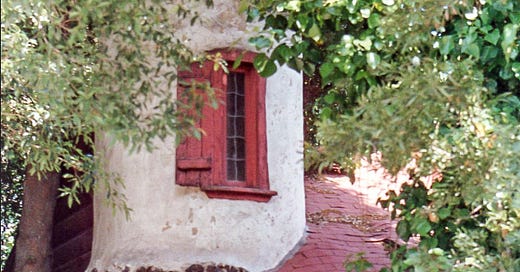



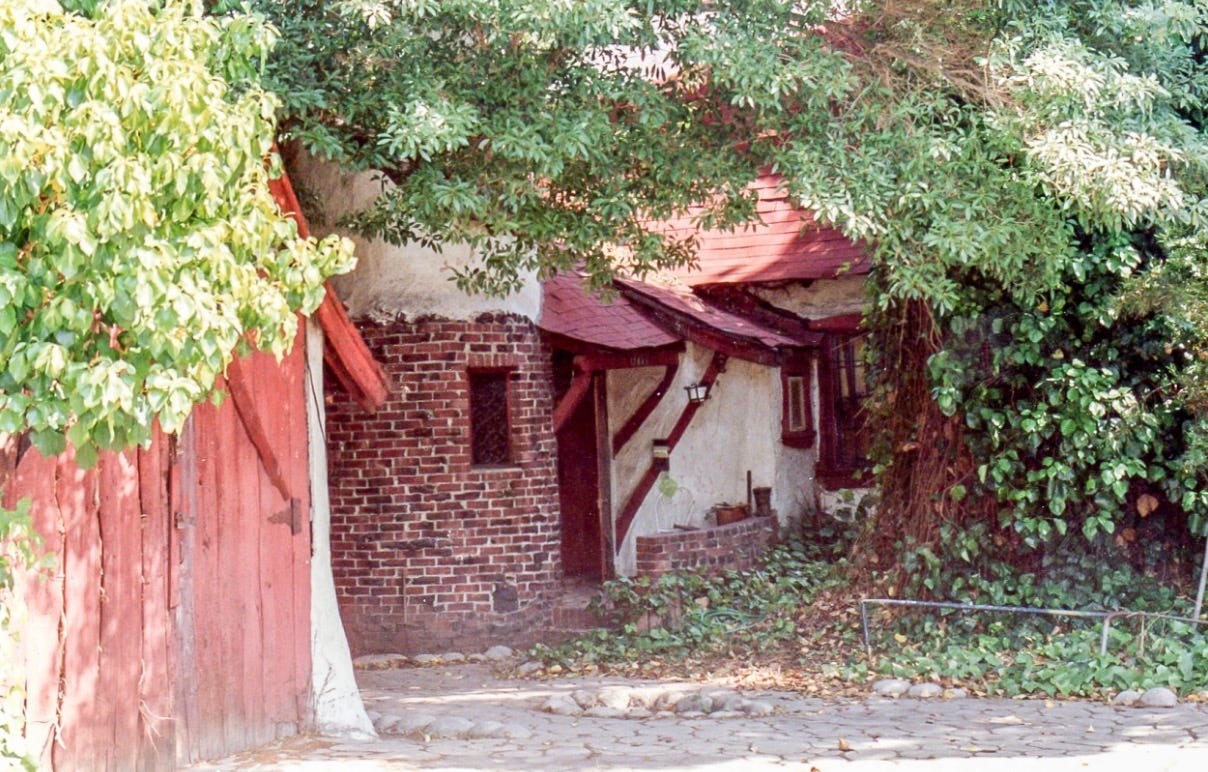
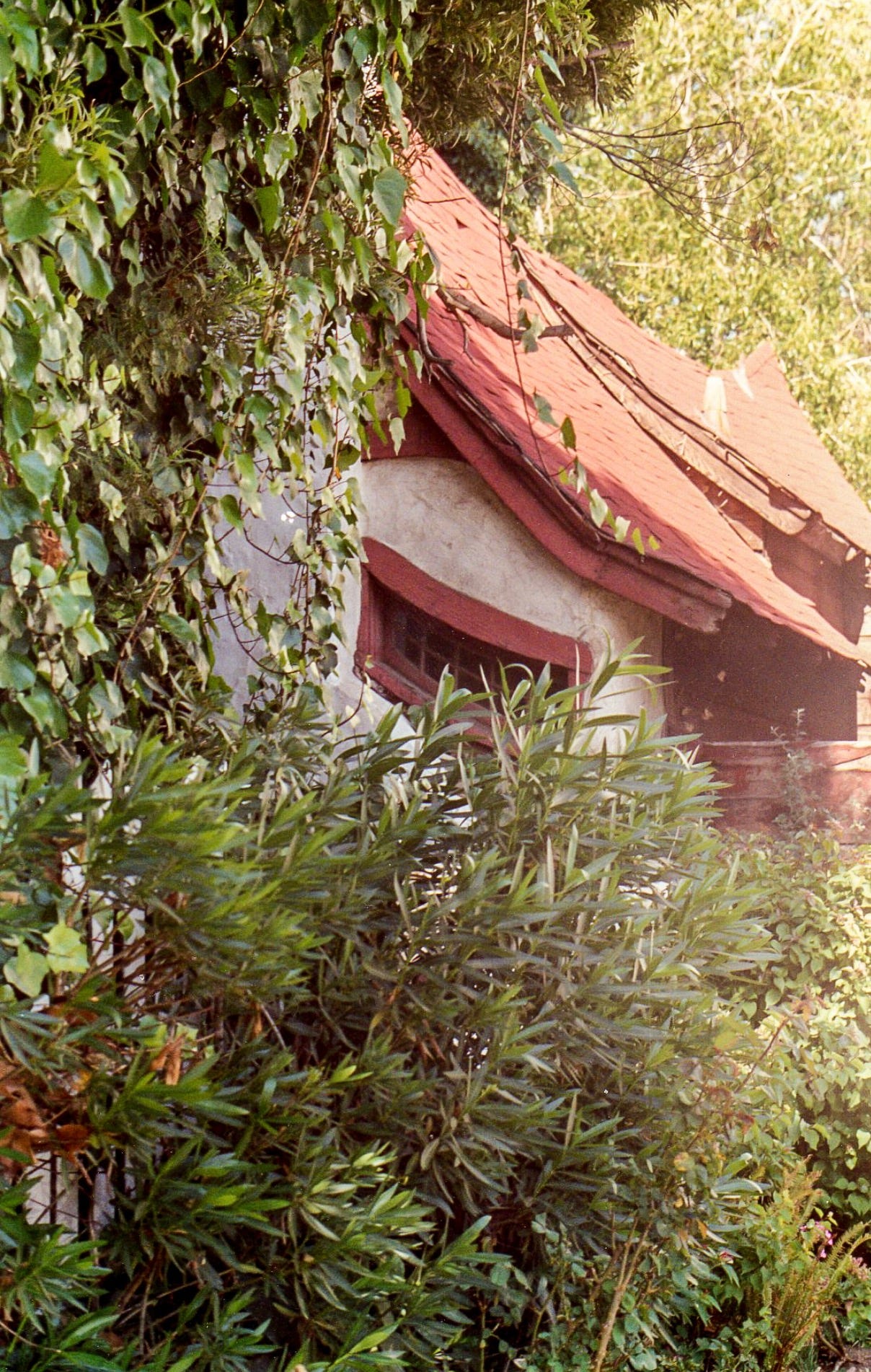
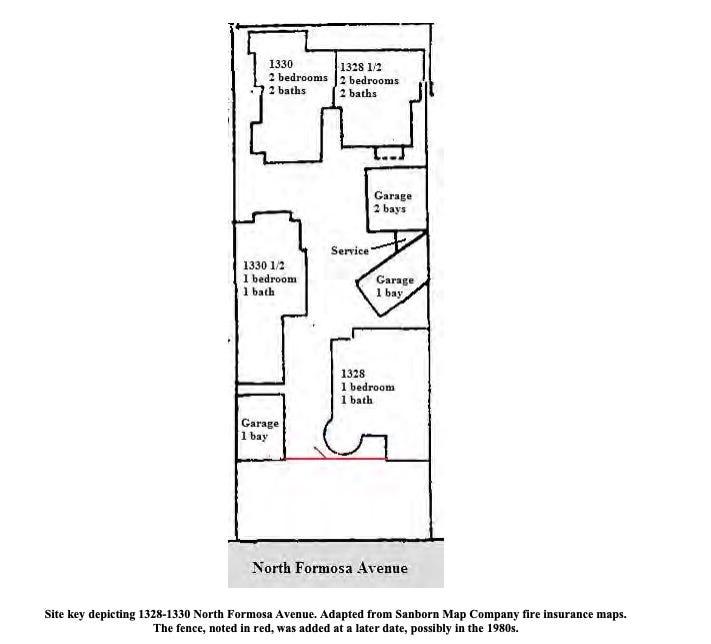

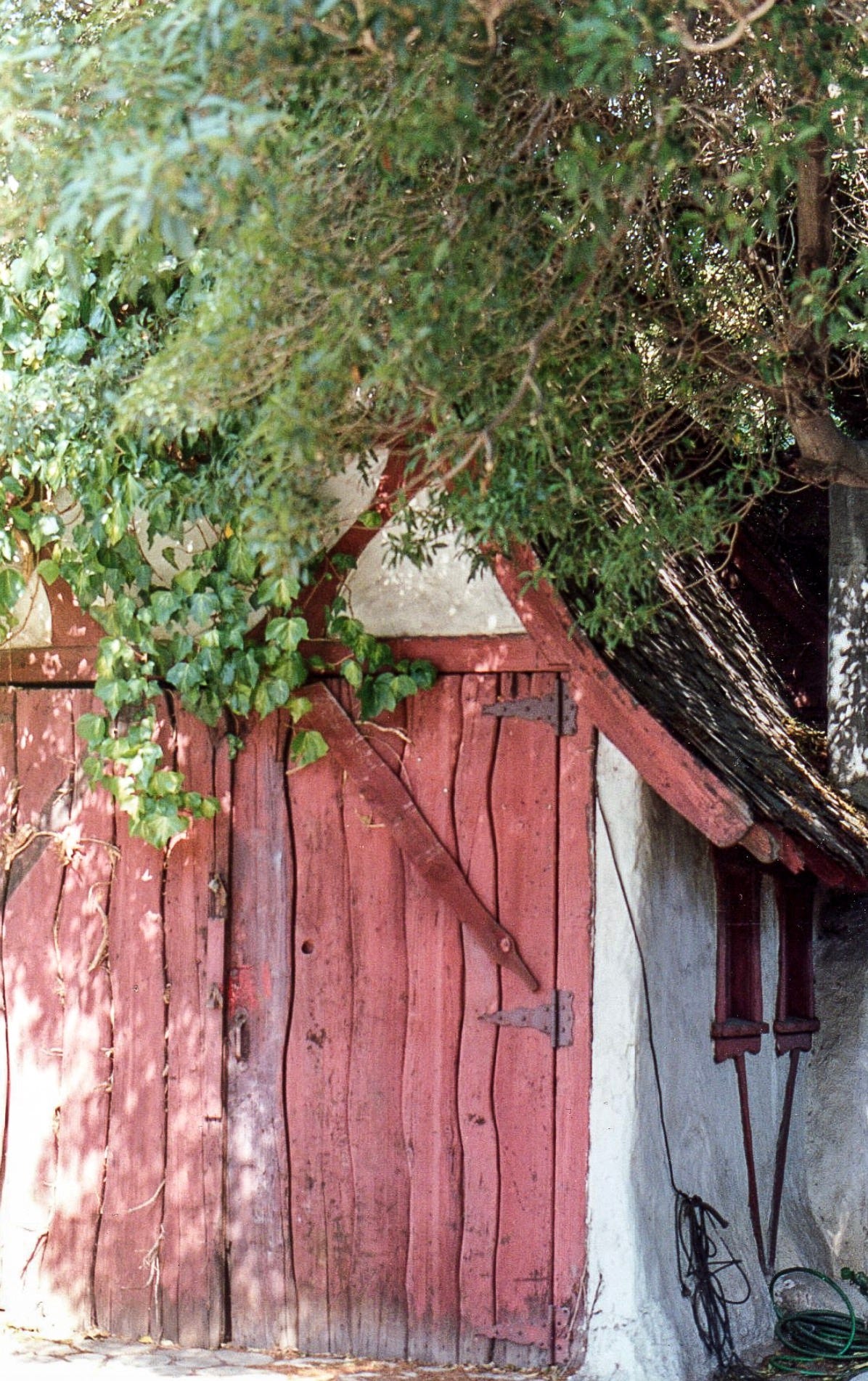
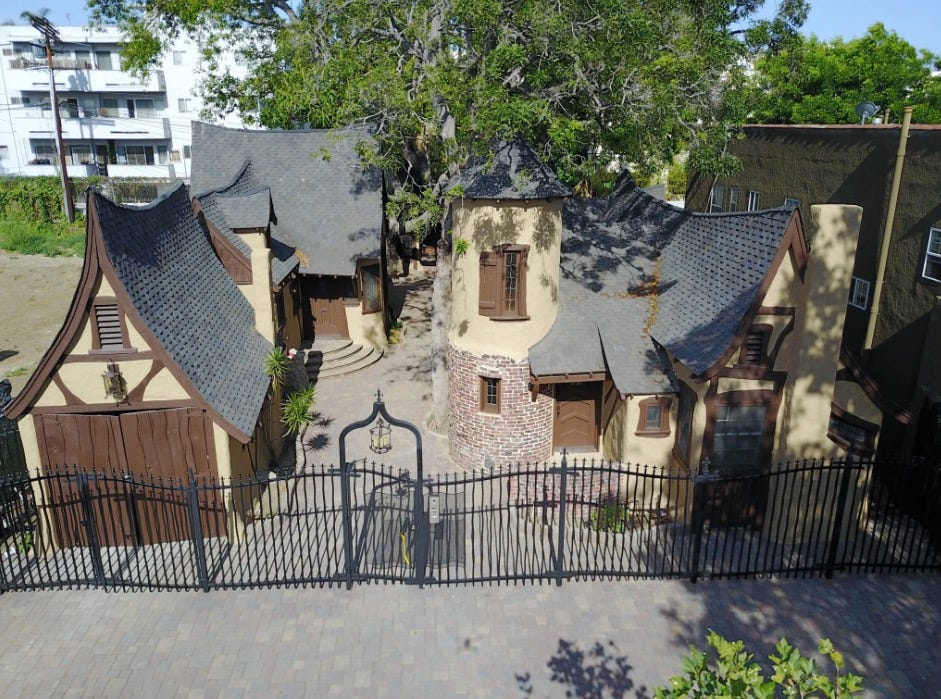
Thanks for an interesting read – I had no idea!
Wonderful photographs. The red and white color scheme is so much prettier than the brown and tan, and reminds us of the fairy story sisters Snow-White and Rose-Red. Maybe next time these cottages are painted, they'll bring them back to how they looked when you found them.